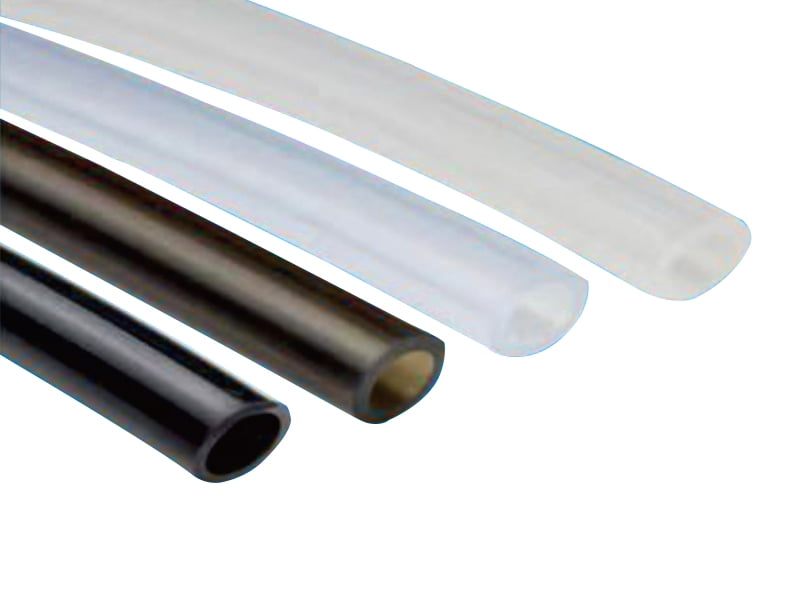Silicone Rubber Sleeve: Properties, Applications, and Maintenance
What is a Silicone Rubber Sleeve?
A Silicone Rubber Sleeve is a flexible, tubular covering made from silicone elastomers, designed to provide protection, insulation, and environmental sealing for various components. These sleeves exhibit exceptional thermal stability, chemical resistance, and electrical insulation properties, making them ideal for demanding applications across multiple industries.

Key Characteristics with Technical Data:
Temperature Resistance: Withstands continuous exposure from -60°C to 230°C (-76°F to 446°F), with intermittent peaks up to 300°C (572°F) for specialized formulations.
Tensile Strength: Ranges between 8-12 MPa (1160-1740 psi), providing excellent mechanical durability.
Elongation at Break: Typically 400-700%, allowing significant stretching without tearing.
Dielectric Strength: 18-22 kV/mm, making it an outstanding electrical insulator.
Shore Hardness: Available in various durometers, commonly 30A-70A on the Shore A scale.
Chemical Resistance: Resistant to most acids, alkalis, and solvents with a swell rate <15% when exposed to ASTM oil #3 at 100°C for 70 hours.
Flame Resistance: Meets UL 94 V-0 standards with a self-extinguishing time <10 seconds.
Applications of Silicone Rubber Sleeves
The unique combination of properties makes silicone rubber sleeves suitable for numerous industrial and commercial applications:
1. Electrical Insulation
In high-voltage applications, silicone sleeves provide >1012 Ω·cm volume resistivity, preventing current leakage and arc tracking. They're used for:
Bus bar insulation in switchgear (up to 36 kV systems)
Transformer lead protection
High-voltage cable joints and terminations
2. Thermal Management
With a thermal conductivity of 0.2-0.3 W/m·K, these sleeves are employed in:
Heat shrink applications for pipe insulation
Thermal barriers in automotive exhaust systems
Protective covers for industrial heating elements
3. Chemical Processing
The <0.5% weight change when exposed to harsh chemicals enables use in:
Pump and valve stem protection in chemical plants
Laboratory equipment shielding
Pharmaceutical processing line components
4. Medical Devices
Medical-grade silicone sleeves (USP Class VI compliant) serve as:
Protective covers for surgical instruments
Insulation for electrosurgical tools
Gripping surfaces for prosthetics
5. Aerospace and Defense
Meeting MIL-DTL-25988 specifications, these sleeves are critical for:
Wire harness protection in aircraft (with -65°C to 200°C operational range)
Missile guidance system component insulation
Satellite wiring protection against atomic oxygen
Maintenance and Care Guidelines
Proper maintenance extends silicone rubber sleeve lifespan beyond the typical 5-10 year service life:
Cleaning Procedures
Mechanical Cleaning: Use lint-free cloths with isopropyl alcohol (IPA) for surface contaminants
Ultrasonic Cleaning: Effective for intricate designs at 40-60 kHz with pH-neutral solutions
Steam Cleaning: Suitable for food-grade applications at <140°C steam temperature
Storage Conditions
Maintain storage temperature between 10-25°C (50-77°F)
Relative humidity should be <65% RH
Keep away from ozone-generating equipment (storage life reduces by 30% at >0.1 ppm ozone)
Performance Monitoring
Conduct annual dielectric tests (minimum 15 kV/mm maintained)
Measure hardness changes (alert if Shore A variation exceeds ±5 points)
Inspect for compression set (replace if >25% after 22h at 175°C per ASTM D395)
Replacement Indicators
Visible cracks exceeding 0.5 mm depth
Permanent deformation >15% of original dimensions
Surface resistivity dropping below 1010 Ω/sq




 English
English

